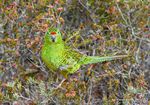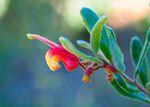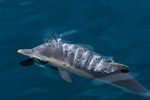WINTER Vol: 3/2021 - Molecular Ecology Lab at Flinders University
←
→
Page content transcription
If your browser does not render page correctly, please read the page content below
Threatened Wildlife Photographic Competition
Nowa Nowa grevillea (Grevillea celata). Image: Stanislaw Wawrzyczek - 2019 entrant.
Hairy correa (Correa aemula). Image: John Muchan - 2020 entrant. Long-flowered nancy (Wurmbea Tubulosa). Image: Jennifer Smith - 2018 entrant.
Australian Wildlife Society
Threatened Wildlife Photographic Competition
Conserving Australia’s Wildlife Conserving Australia’s Wildlife
since 1909 since 1909
$1,000 - Annual Judge’s Prize
$500 - Annual People’s Choice Prize
Online Voting: July 1 to July 30
VOTE NOW!
bit.ly/AWSVote
2 Australian Wildlife Vol 3 - Winter 2021Contents
Features Regulars
6 Australian Wildlife Week:
Connecting with Nature -
Megan Fabian 5 From the President’s Desk
7 #SnipRingsforWildlife Receives
a Leg Up - Megan Fabian 30 Australian Wildlife Society
National Colouring-in
Competition
10 Banksias: Bushfire Survivors - 10 19
Doctor Kevin Mills
34 2021 University Research
Grant Winners
13 Changes to River Flows Are
Having a ‘Damming’ Impact on
Platypuses - Doctor Tahneal
Hawke, Doctor Gilad Bino, and
Professor Richard Kingsford
36 Book Reviews
16 Connectivity of Common
Dolphins Across the Australasian
38 Membership Form
Metapopulation - Andrea
13 21
Barceló, Luciano Beheregaray,
and Luciana Möller
19 Tackling Australian
Wildlife Entanglement -
Leonard Fitzpatrick
21 Kangaroo Numbers May be
Jeopardising Conservation
Efforts -Charlotte Mills and
Professor Mike Letnic
23 A New Way to Follow how
Australia’s Threatened
Species are Faring - 14 26
Doctor Ayesha Tulloch, and
Doctor Micha Jackson
27 Ground Parrots: The Society’s
Wildlife of the Year -
Doctor Julie Old
31 Prehistoric Insects -
Doctor Eliza Middleton
35 2020 Australian Wildlife
Society University of Western
Sydney Wildlife Ecology 16 27 Megan Fabian
Research Scholarship Editor, Australian Wildlife
ON THE COVER: Above Right: Caley’s grevillea (Grevillea caleyi) is a shrub and September. The coloured spider-orchid is listed as
endemic to Australia and grows only in the northern suburbs Endangered and is under threat from various grazing
Front Cover: animals, invasive weeds, and illegal collection of plants.
of Sydney. Caley’s grevillea is critically endangered and under
Silver princess (Eucalyptus caesia) is endemic to the south- threat from habitat loss, invasion of weeds, and rubbish Image: Noushka Reiter.
west of Western Australia. Eucalyptus caesia subspecies dumping. Image: Dr Tony Auld.
magna grows to a height of fifteen metres with silvery
drooping branches and larger blue-grey/mid-green leaves, Bottom Left: Pink pokers (Grevillea petrophiloides) is a
buds, and fruit. Its large stunning flowers appear in autumn tall, erect shrub native to Western Australia that produces WINTER Vol: 3/2021
and winter and vary from pink to red, although white- bright pink flowers that grow eight centimetres long
flowered plants have been reported. These flowers attract during winter and spring. The shrub attracts insects and
nectar-feeding birds, making them an excellent choice for nectar-eating birds such as hummingbirds. Image: Megan
your garden. Image: Megan Fabian. Fabian.
Back Cover: Bottom Right: The coloured spider-orchid (Caladenia
Above Left: Grevillea loopy lou (Grevillea hybrid) is a small, colorata), endemic to South Australia and Victoria, is
fast-growing shrub with large flowers that change from a ground orchid with a single hairy leaf and creamy-
yellow, pink, and red. Like most grevilleas, loopy lou is a green flower with blood-red or purple-brown markings.
bird attracting species and ideal for screening and hedging. Commonly found growing in sand or sandy soils, the
Image: Megan Fabian. flowering period of the orchid extends through August
Australian Wildlife Vol 3 - Winter 2021 3Connectivity of Common Dolphins
Across the Australasian Metapopulation
Andrea Barceló, Luciano Beheregaray, and Luciana Möller
Australia and New Zealand share a vast ocean where many marine deoxyribonucleic acid (DNA) markers to
species interact, from phytoplankton to top predators such as clarify the connectivity of the species
dolphins, seals, and sharks. The common dolphin (Delphinus delphis) between Australia and New Zealand.
is a magnificent charismatic species widely distributed and abundant Furthermore, the researchers identified
in the region. Common dolphins can be found along the continental and generated information that can be
shelf of southern and eastern Australia. In New Zealand, they mainly used to obtain successful conservation
concentrate around the north island. Although they can migrate and management outcomes.
thousands of kilometres in large groups of hundreds of individuals, in
The Power of Genomics to Elucidate
some populations, they associate in smaller groups of a few to dozen
Population Connectivity
individuals and remain in relatively small areas.
Conservation genetics, or genomics
when referring to genome-wide data,
Common dolphins are known to populations are connected, and how
plays a significant role in characterising
follow the distribution of their prey. they are adapted to their environment.
genetic diversity and informing the
Dolphins feed mainly upon schooling
management of endangered species.
fish such as mackerel, sardines, and A PhD research based at Flinders
The same principle can be applied to
anchovies. However, these prey species University, in collaboration with
species or populations currently at-
are also targeted by fisheries in the several Australian and New Zealand
risk from human activities and rapid
Australasian region, which has led institutes (listed below), has recently
environmental changes.
to entanglements and mortalities of assessed the population structure and
common dolphins in several fisheries connectivity between Australasian After a monumental field effort to
regions. Compared to other coastal common dolphins. The partnership collect samples over most of the
dolphin species or even some shark allowed the analyses of over five distribution of common dolphins
species, we know little about how hundred dolphin samples, collected
many dolphin populations there between 2000 and 2017, and for Above: A common dolphin (Delphinus delphis)
are, where they are located, how the first time, used thousands of in southern Australia. Image: Kirsten Bilgmann.
16 Australian Wildlife Vol 3 - Winter 2021in Australasia, the study found that
common dolphins are structured as
a large, hierarchical metapopulation
with various levels of connectivity
between them. The metapopulation is
subdivided into three main populations.
The populations are represented
by temperate eastern Australia and
southern Australia, with low levels of
connectivity between them, and New
Zealand and Tasmania combined, the
latter with moderate connectivity to the
eastern Australian population.
Differences in levels of connectivity
appear to be dependent on the scale
of movement of different populations,
which seem to be affected by different
oceanographic processes occurring on
the continental shelves of both the
Pacific and Indian Oceans. For example,
some common dolphins from southern A simplified graphical representation of the study’s findings shows that the metapopulation is subdivided into
Australia appear to seasonally move three main populations.
following the formation of upwellings
and locally enhanced biological
productivity, leading to wide-ranging
populations and higher connectivity.
In contrast, areas previously known
to act as biogeographic boundaries,
such as the ‘Bassian Isthmus’, separate
many marine species between southern
and eastern Australia and appear to
reduce connectivity between common
dolphins of the two ocean basins.
Common dolphins from around
Tasmania are particularly interesting,
with individuals from eastern Tasmania
exhibiting greater levels of connectivity
to dolphins across the Tasman Sea in
New Zealand, while others are more
related to eastern Australian common
dolphins.
Another interesting finding relates
to common dolphins inhabiting the
Gulf of St Vincent in South Australia.
A common dolphin (Delphinus delphis) in the Gulf of St Vincent in Australia. Image: William Pyke.
This subpopulation has low levels
of connectivity to others outside the
Gulf, suggesting that it may represent
a resident population with potential
gene adaptations to the environment it
inhabits.
Management of Common Dolphin
Populations
The common dolphin is currently an
abundant species in Australia and New
Zealand; thus, they are not generally
considered a priority species for
conservation. However, management
of their populations is required given
the species’ protected status and by-
catch levels in several fisheries. The
distribution of the three main dolphin
populations and their boundaries
should be considered when managing
dolphin and fisheries interactions.
The need for continuing connectivity
between demographically dependent Common dolphins (Delphinus delphis) in Australia are known to vary in colour between localities or
subpopulations found within ocean populations. Image: Cetacean Behaviour, Ecological and Evolutionary Lab research team.
Australian Wildlife Vol 3 - Winter 2021 17basins is vital. Given the findings, new
collaborative efforts across state and
international jurisdictions need to
be made to ensure that management
of the species in Australasia leads
to the long-term persistence of its
populations.
Conservation genomics is a developing
field. The study provides an initial
step towards understanding the
adaptive resilience of local and regional
populations of a small cetacean to
naturally- and anthropogenically-
driven environmental change. For
more information on common dolphin
genomics research, visit the Molecular
and Ecology Research Lab website at
www.molecularecology.flinders.edu.au/
publications/
Collaborating institutions: the
Cetacean Behaviour, Ecological
and Evolutionary Lab (CEBEL) and
the Molecular Ecology Lab from
Flinders University, the Cetacean
Ecology Research Group from Massey
University, the National Institute of
Water and Atmospheric Research of
New Zealand, University of Auckland,
Ministry of Primary Industries in New
Zealand, Tasmanian Museum, and the
Department of Primary Industries,
Parks, Water and Environment of
A pod of common dolphins (Delphinus delphis) in the Gulf of St Vincent in Australia. Image: William Pyke. Tasmania.
An ariel view of a pod of common dolphins (Delphinus delphis) in Australia. Image: Cetacean Behaviour, Ecological and Evolutionary Lab research team.
18 Australian Wildlife Vol 3 - Winter 2021Membership Form
Membership
Become a member of the Australian Wildlife Society
Simply fill out this form.
Name:.......................................................................................................................................... Conserving Australia’s Wildlife
since 1909
Address: .........................................................................................................................................................................................
City/Suburb:..................................................................................................................Postcode:...................................................
Telephone: ....................................................................................................................Fax: ...........................................................
.....................................................................................................................................Email: ........................................................
Membership category (please tick) Three year membership (please tick)
o Student (conditions apply): $0 o Individual (hardcopy magazine): $150
o Individual (hardcopy magazine): $55 o Family (hardcopy magazine): $190
o Family (hardcopy magazine): $70 o Concession (pensioner/student/child): $135
o Concession (pensioner/student/child): $50 o E-mag (emailed as PDF, no hardcopy will be sent): $81
o E-mag (emailed as PDF, no hardcopy will be sent): $30 o Associate (library, school, conservation groups): $230
o Associate (library, school, conservation groups): $85 o Corporate: $340
o Corporate: $125 (Includes postage within Australia. Add $60 for overseas postage)
o Life: $2,000
(Includes postage within Australia. Add $40 for overseas postage)
Payment details (please tick)
Direct Debit Cheque Money Order Mastercard Visa Card Security Code (CSC) __ __ __ __
Card Number: Amount $.......................
Name on Card:..................................................................... Expiry: ......................... Donation $.......................
Signature: ................................................................................................................ Total $.......................
Mail to the: Australian Wildlife Society Direct debit: BSB: 062 235
29B/17 Macmahon St, HURSTVILLE NSW 2220 Account No: 1069 6157
Email: accounts@aws.org.au Account Name: Wildlife Preservation Society of Australia
Website: www.aws.org.au trading as the Australian Wildlife Society
Membership Hotline: Mob: 0424 287 297
Note: All cheques to be made out to the Australian Wildlife Society
Membership Benefits LEAVE A BEQUEST
Magazine: Receive the quarterly issue of Australian Wildlife via email or post to keep up-to-date with the
IN YOUR WILL
collective work promoted nationally. If you would like to find out how
to leave a bequest to the Society or how
E-Newsletter: Receive the monthly e-newsletter. Keep up-to-date with news from our members and on your bequest can make an impact, please
download our bequest information pack.
the work of the Society.
AWS Portal: Access the Members' Resource Centre - your destination for resources and materials on
various wildlife-related topics.
Social Media: Contribute to our social media platforms: Instagram, Twitter, Facebook, LinkedIn, YouTube,
and Website.
Right to Vote: You have the right to vote on important matters at Society general meetings
(financial members only).
Other Benefits: Awards, Scholarships, Grants, and the opportunity to network with like-minded people.
38 Australian Wildlife Vol 3 - Winter 2021You can also read



























































